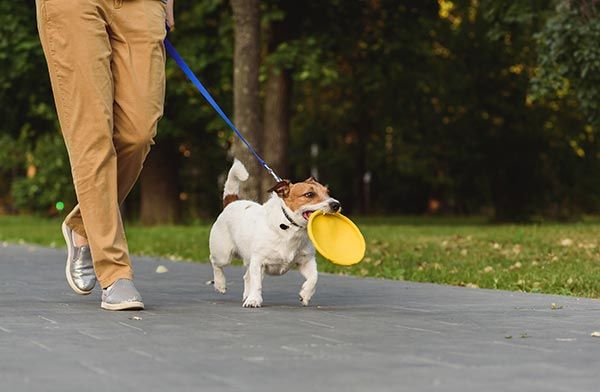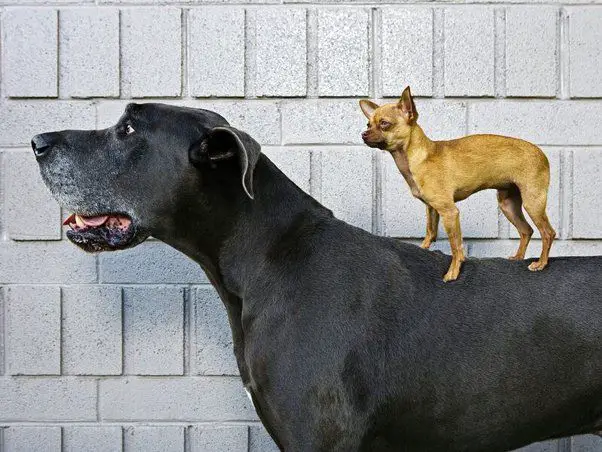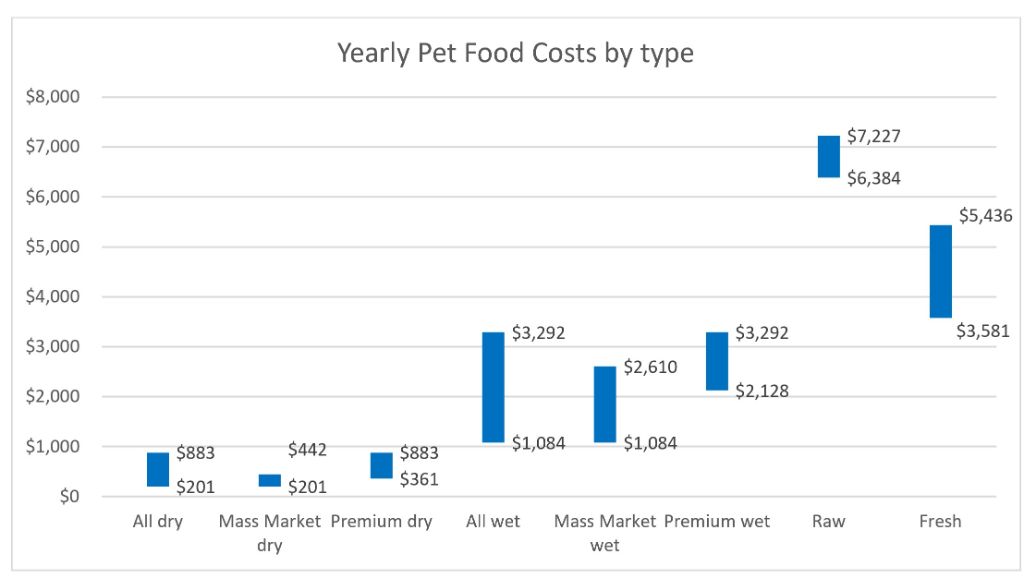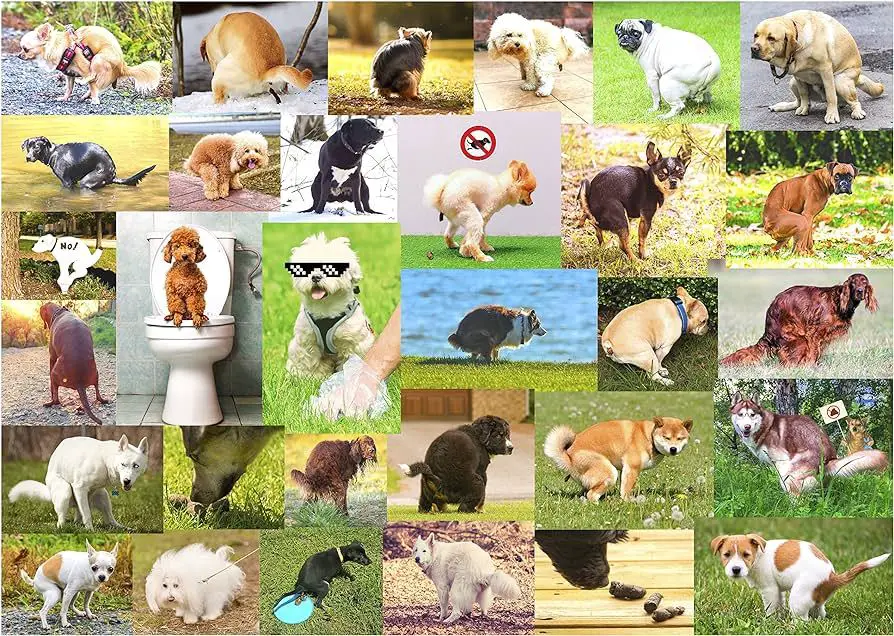Introduction
Many dog owners question if the type of food they feed their dog impacts the volume and frequency of their dog’s poop. Specifically, some owners wonder if feeding their dog canned food instead of dry kibble leads to smaller and less frequent poops.
This is an interesting question because while canned food tends to have higher moisture content and less fiber than dry kibble, there are other factors that can impact poop volume as well. On the surface, it seems reasonable that canned food could lead to less poop, but the full story is more nuanced.
In this article, we’ll dive into the key factors that impact poop volume in dogs, examine the relevant scientific research, and provide tips for dog owners to monitor their dog’s poop when making any diet change.
The Role of Fiber
Fiber is an important part of a dog’s diet and plays a key role in digestive health. Unlike other nutrients that are absorbed in the small intestine, fiber passes through the gastrointestinal tract mostly undigested. This undigested fiber adds bulk and volume to a dog’s stool. More fiber tends to result in larger, bulkier stools while a lack of fiber leads to smaller, harder stools.
There are two main types of fiber – soluble and insoluble. Both play important roles. Soluble fiber can help regulate blood sugar levels and feed beneficial gut bacteria. Insoluble fiber, on the other hand,passes through the GI tract intact, helping add bulk to stool and preventing constipation. The amount and type of fiber in a dog’s diet impacts stool volume and consistency.
Canned Food Typically Has Less Fiber
One of the main reasons dogs may poop less on canned food diets is that canned food typically contains less fiber than dry kibble. This is because the canning process involves cooking the food and removing some of the moisture. Fiber from fresh fruits, vegetables, grains and other ingredients gets partially broken down and lost.
Dry dog kibble, on the other hand, maintains more of its original fiber content from ingredients like bran, cellulose and whole grains. The ingredients aren’t subjected to the same cooking and canning process that wets and softens the food, allowing it to retain more intact sources of fiber.
With less fiber to give it bulk, canned food tends to form smaller, more compact stools in dogs. This means they may defecate less volume overall on wet food diets compared to kibble diets.
Other Factors That Impact Poop Volume
In addition to diet, there are other factors that can affect the volume and frequency of a dog’s poop, including:
Hydration – Ensuring your dog drinks enough water is crucial for healthy digestion and bowel movements. Dehydration can lead to harder, smaller stools. Make sure fresh water is always available.

Exercise – Regular physical activity helps stimulate the digestive system and keep things moving through the gut. Dogs that exercise more tend to poop more frequently. Try to give your dog adequate daily exercise tailored to their age and breed.
Health – Any underlying medical conditions or gastrointestinal issues could impact stool volume or cause constipation and diarrhea. Problems like inflammatory bowel disease, infections, parasites, pancreatitis and more may be factors. If concerned about significant changes, see your vet.
Anecdotal Experiences
Many pet owners that switch their dogs from dry kibble to canned food report noticing less poop volume. On dog owner forums and discussion boards, this is a commonly discussed observation when transitioning dogs to a canned food diet.
Owners describe going from large stool volumes on kibble to markedly smaller and more compact stools on canned foods. Some note their dogs need to poop less frequently, perhaps only once or twice a day on canned food versus multiple times per day on kibble.
Of course, these reports are anecdotal and not scientific evidence. Individual experiences can vary based on the dog, ingredients, activity level, hydration, and many other factors. But the recurring observations from numerous owners seem more than coincidental.
While controlled studies are needed, many pet owners switching to canned food are noticing less poop to pick up. This trend in owner experiences suggests canned food may lead to less poop volume compared to kibble diets.
Expert Opinion
According to veterinarians, there are a few factors that contribute to differences in poop volume between dogs fed canned versus dry food. One of the main reasons is the difference in fiber content. Most canned foods contain much less fiber than their dry counterparts. Fiber provides bulk to stool and helps food move through the digestive tract. With less fiber, stools are typically smaller and less frequent on wet food diets.
However, veterinarians note this doesn’t necessarily mean the dog is pooping “less.” The quality of poop can differ based on the digestibility of the diet. While canned food produces less stool quantity, the stools are often more dense and concentrated. The dog is absorbing more nutrients, so there is less waste product. The total poop output may be similar between wet and dry food when you account for water content.
Veterinarians emphasize paying attention to stool quality over quantity alone. Smaller stools are not problematic as long as they are formed, consistent, and without blood or mucus. Monitoring appetite, energy levels, weight changes and other signs of health are also important. There are pros and cons to canned and dry foods, so experts recommend choosing a diet that works best for an individual dog.
Scientific Studies
There are a few scientific studies that examine how wet and dry dog food impact poop volume.
In one study, researchers fed dogs either a dry kibble diet or wet canned food diet for 4 weeks. They measured the dogs’ fecal output and found that dogs on the dry kibble diet had significantly firmer and lower volume stools compared to when they were fed canned food. The researchers concluded that canned food leads to increased stool volume and softer stool consistency in dogs.
Another study compared four different diets in dogs – dry dog food, wet dog food, a raw meat diet, and a homecooked diet. They found that dogs on the wet food diet had much larger stools than dogs eating kibble. The homecooked and raw diets also resulted in larger stool volumes.
While limited, these studies show that replacing dry kibble with wet canned food tends to increase the amount dogs defecate. The higher moisture content of canned food and lower fiber are likely reasons for this difference.
Tips for Monitoring Poop
When trying to determine if your dog’s poop volume changes on different types of food, consistency is key. Here are some tips for monitoring your dog’s poop:
Weigh the poop. This may sound silly, but weighing your dog’s poop daily or every other day can help you track changes. Use a kitchen or small postal scale. Record the weight each time.

Take photos. Along with weighing, taking a photo can help monitor size and consistency. Make sure to use the same background (like newspaper) for comparison.
Use a poop journal. Write down every poop in a notebook or app. Note the date, time, weight, size, color, texture, and anything else noteworthy.
Compare over time. Look at your records over a 2-4 week period on each food type. Average the weights and look for differences in size, texture, etc.
Control variables. To get accurate results, keep your dog’s meal portions, exercise, and schedule consistent during the comparison.
Paying close attention to changes over time can reveal if canned food leads to less poop for your individual dog.
Potential Downsides of Canned Food
While canned dog food can be more convenient and solve some issues like poop volume, it also comes with some potential downsides to consider.
One is that canned food provides less dental benefits for dogs. Kibble’s crunchy texture helps scrape plaque and tartar off a dog’s teeth as they chew. Canned food is soft, so it does not provide this dental advantage. As a result, dogs fed only canned food are more prone to dental disease like gingivitis and periodontal disease over time.

Canned dog food also tends to be more expensive per serving compared to dry kibble. The canning process and higher moisture content causes canned food to be priced higher. Over time, feeding only canned food may cost considerably more than feeding dry food. Pet owners will need to decide if the benefits of canned food outweigh the increase in cost for their individual dog.
Conclusion
In summary, the evidence suggests that dogs do tend to poop less on canned food compared to dry kibble. This is likely due to canned food having lower fiber content on average. Fiber is not digested and adds bulk to stool. However, other factors like hydration status, exercise levels, age, and health conditions can also impact poop volume. While some owners anecdotally report smaller stools on canned food, scientific studies are limited. There are also potential downsides to feeding only canned food long-term, such as higher cost and less dental benefits. In moderation though, incorporating some canned food may slightly reduce stool volume for some dogs. Monitoring your dog’s poop can help determine if a diet change affects their individual bowel movements. Overall, stool volume is just one factor to consider when choosing between canned versus dry food. As long as your dog has regular, healthy poop, the format of their food is not necessarily a major concern.
